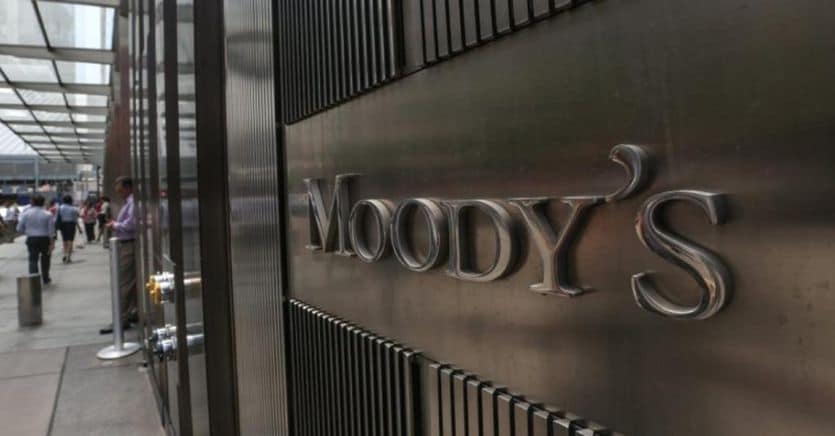Moody’s once again confirms the rating Baa3 of the Italian debt with a stable outlook. The agency thus interrupts the string of “promotions” that has marked the last few months of our government bonds, and takes a wait-and-see position on the next developments in monetary policy.
The fall rating season, which will end on December 3 with Fitch, is in any case a positive tone on our government bonds. Which in less than three months have struck five improvements in the outlook by the rating agencies. The move was decided by Dbrs last Friday (from negative to stable) and by Standard & Poor’s two weeks ago (from stable to positive), while Scope Rating had raised the outlook from negative to stable on August 20 with a choice that was then replicated. by two Japanese agencies, JCR on October 22 and R&I on 25.
To remove the alarms from the Italian debt despite its record levels is the unexpected drop in weight on GDP already this year, thanks to a rebound that aims to consolidate with the PNRR carried out despite the tensions in the majority in support of the Draghi government. Helping is the drop in the weight of interest expense on public accounts: on the way to 2.5% of GDP in 2024, from 3.5% in 2020, above all thanks to the arrival at maturity of bonds issued during the crisis of the debt with coupons even 4-5 times higher than the current ones (yesterday the ten-year closed at 0.878%, in sharp decline, the spread to 115.1).
On Monday, the small savers will set their sights on government bonds. At the start is the placement of the fourth BTp Futura (dealer Intesa and Unicredit, co-dealer Banca Akros and Banca Sella), which will offer a minimum return of 1.372% per year to those who keep it in their portfolio for all 12 years of its duration. But if the Italian nominal growth of the period is lively enough, the minimum annual yield could rise to 1.674%; for those who decide to exit after eight years, the fluctuation band will be between 1.05 and 1.15% net of price changes.
